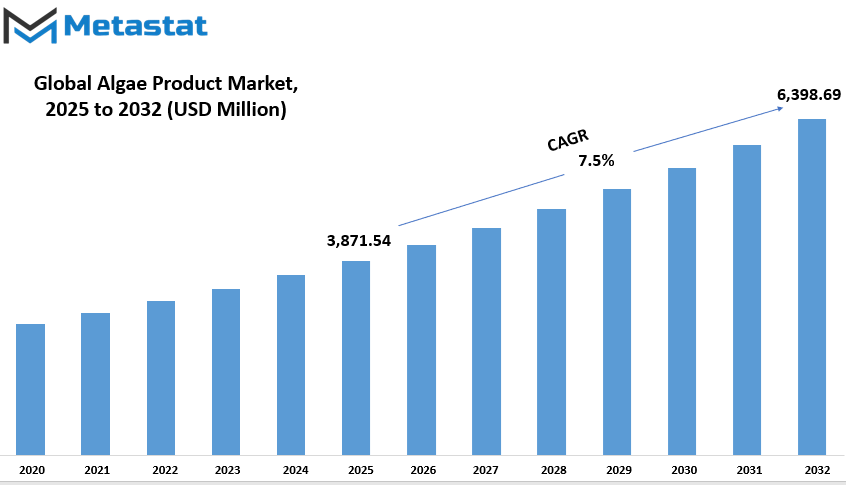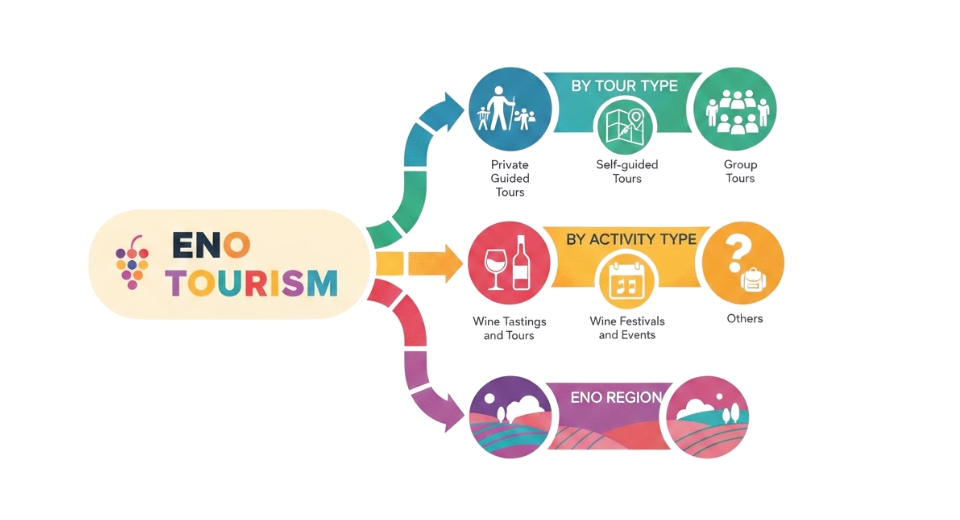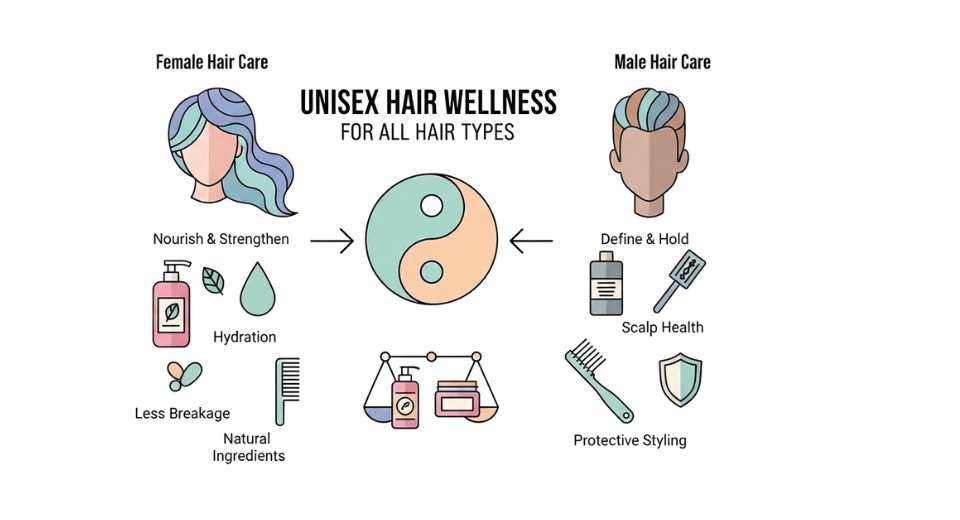MARKET OVERVIEW
The global algae product market and the industry is such an enormous area of opportunity that includes the production, processing, and marketing of algae-based products for various industries. This surge in the importance of algae can be attributed to the vast usage of the same in applications - from being a food product to pharmaceutical, nutraceutical, cosmetic, feed, biofuel, and bioplastics. Due to its biochemical composition unique among algae and rich in proteins, lipids, carbohydrates, and essential micronutrients, this market holds out new possibilities for a large cross-section of industries.
Production and processing of the microalgae and macroalgae or commonly known as seaweed are part of the market's scope. Due to their spirulina and chlorella spirulina with these high levels of protein and nutrient, the spirulina and chlorella microalgae are quite valuable. For the case of macroalgae, the bioactive compounds are supplemented with agar and carrageenan as well as renewable energy, therefore of great values. Furthermore, algae's flexibility in thriving even in a diversity of freshwater and marine ecosystems points out to its ability and potential for enhancing resource-efficient production systems.
The global algae product area is going to experience further development through new technologies in cultivation and extraction methods soon. Open pond systems, photobioreactors, and closed-loop technologies are being assimilated to optimize growth in algae while managing the degradation of the environment. These methods are not only helping in increasing yield but also are reducing production costs thus causing algae-based products more accessible to a wide group of people. Future ongoing research and development will continue unlocking new applications of algae, improving their value proposition across various end-use industries.
Algae-derived products emerge as new functionalities in the food and beverages industries; most of its current applications are its coloring agents for nontypical shades, or rather, rich source of omega-3 fatty acids, as sources of dietary supplementation. In pharmaceuticals and nutraceutical industries, the anti-inflammatory, antioxidant, and immune-boosting aspects of algae are being harvested due to their application in pharmacy by the bioactive compounds removed from the algae source. Skincare and rejuvenative cosmetics rely heavily on algal extracts since hydrating, nourishing, or refreshing effects.
With time, the Global Algae Product market is expanding and now progressively entering the domain of sustainable energy solutions. Increasing demand from numerous industries to move towards fossil fuel alternatives, which has brought algae to be used more and more as feedstock to produce biofuels that includes both biodiesel and jet fuel. In addition, algae-based bioplastics are emerging as the feasible eco-friendly alternatives to traditional plastic produced from petroleum.
The market is likely to be favorable by government policies due to investment and promotion of the cause of sustainable development and reduction in carbon emissions. This is likely to induce large-scale cultivation of algae and further cooperation of various research institutions and private organizations in producing high-quality products with lower costs.
It is alongside such a developing demand for environment responsibility and nutrition supplementation that such a global product market of algae itself will transform the broad area. Its diversity of applications with challenges of present nature ensure that further industrial practices in the future ought to be generated efficiently and even more responsibly.
Global Algae Product market is estimated to reach $6,398.69 Million by 2032; growing at a CAGR of 7.5% from 2025 to 2032.

GROWTH FACTORS
The global algae product market has caught much attention lately due to its versatile applications in many industries. Algae-based products are majorly used in the food and beverages, pharmaceuticals, cosmetics, and biofuels sectors among others hence being part of many commercial and industrial processes. Growth of this market is predominantly resulting from increased demand for sustainable and eco-friendly alternatives to conventional resources. With the world shifting toward more environmentally sustainable and healthier lifestyles, algae products are sure to find their way into this booming demand.
Rising awareness about health benefits from using algae-based products is another reason that propels the growth of the global algae product market. Algae are also abundant in essential nutrients, such as proteins, omega-3 fatty acids, and antioxidants, that have made algae a popular item in the health and wellness industry. The food and beverage industries have also adapted algae as a new ingredient into their products; they offer consumers vegan and plant-based options where they can use alternatives to products derived from animals. Another motive is the renewed interest in renewable energy sources.
A hopeful raw material from algae for a biofuel means it can ensure cleaner and far more sustainable energies. With respect to climate and fossil fuel reserves depletion, their use will accelerate future demand, again enhancing the growth of the biofuel market for algae. However, the industry has also sought value in their application for various cosmetic products involving creams for skin health due to an anti-aging effect and hydrated property.
Nevertheless, some issues are likely to challenge the growth of the algae product market around the world. High production costs and complexity of large-scale algae cultivation are the main issues. The lack of standard rules for this kind of cultivation and limited awareness in some parts of the world will affect the slow growth rate. Solutions for these problems are going to be vital to bring out the full potential of the industry.
The future will certainly be exciting for participants in the market with scientific progress in the research and development of algae farming as well as algal processing technologies. Improved genetics and manufacturing processes will further advance yield gains on algae products with minimal increase in cost. Continuous investments and strategic collaboration from all players in the value chain will be helpful to sustain growth within the algae product market during the next few years, as the drive is apt to global push for sustainability and healthful living solutions.
MARKET SEGMENTATION
By Type
The global algae product market has, in recent years, attracted considerable attention owing to its versatility applications in several different industries. Most of the product applications for the food and beverages, pharmaceuticals, cosmetics, and biofuels sectors amongst others have given it a footing in many commercial and industrial processes. Growth in the market is being driven by mainly increased demand from sustainable and ecologically friendly alternative sources compared to traditional ones. With the world shifting toward more environmentally sustainable and healthier lifestyles, algae products are sure to find their way into this booming demand.
Rising awareness about health benefits from using algae-based products is another reason that propels the growth of the global algae product market. Algae also contain a significant amount of important nutrients, like proteins, omega-3 fatty acids, and antioxidants, that have made algae popular in the health and wellness market. The food and beverage industries also adopted algae as a new ingredient in their products; they are offering consumers vegan and plant-based options where they can use alternatives to products from animals. Another motivation is the renewed interest in renewable energy sources.
A promising feedstock from algae for a biofuel means it can guarantee cleaner and much more sustainable energies. Considering climate and depletion of fossil fuel reserves, their utilization will speed up future demand, again promoting growth in the biofuel market for algae. However, they have also considered value in applying for different sorts of cosmetic product containing creams and its usage pertaining to skin benefits from an anti-aging effect and by providing hydration to the skin. Nevertheless, some issue is likely to confront the alga product market that will be on a rise for different countries throughout the world.
High production and complexity in raising large-scale cultivation are the leading issues. Lack of standard regulations for such tilling and narrow awareness in particular parts of the world will hurt the growth percentage. Solutions toward these issues shall be important in helping harness the potential into the fullest possibilities of the industry. This would certainly be thrilling for market participants with scientific advancement in the research and development of algae farming, as well as algal processing technologies.
Further improvement in genetics and manufacturing processes will drive algae products to eventually achieve higher yield gains with little cost increases. Periodic investments and strategic cooperation from all stakeholders involved in the value chain will help sustain growth in the algae product market over the next few years, given that demand is apt to drive sustainability through global push for healthful living solutions.
By Source
The Global Algae Product market is quickly emerging as one of the major sectors with a great prospect for growth and innovation. The world continuously looks for alternatives that are environmentally friendly and sustainable, and this has made the way through such views by which algae-based products are established as multi-functioning resources for many industries. From food and beverages to pharmaceuticals, cosmetics, and biofuels, the versatility of algae products has become possible through advances in technology and research. This market is uniquely positioned to respond to some of the most pressing challenges with respect to scarcity of resources, environmental sustainability, and health.
The market varies in type in relation to its application. For example, brown, blue-green algae, red, and green are differentiated in view of the variable properties and differences in their perceived benefits, although they can therefore be suited toward particular applications only. Brown alga is actually the most plentiful species found in sea ecosystems and yields bioactive constituents, including several types of alginate that make up food additive, stabilizing agents, but even biomedical applications in nature.
Cyanobacteria, otherwise known as blue-green algae, are a good source of all the essential nutrients, especially proteins, vitamins, and antioxidants, which have made them so popular in the health and wellness industry. Red algae are found in tropical and temperate waters and are a source of carrageenan, which is the most widely used ingredient in food processing and cosmetics. Green algae, a genus including chlorella and spirulina, is popular for its nutritional content and is now increasingly used in preparation of dietary supplements.
The Global Algae Product market, therefore, shall continue to see growth with more demand for the plant-based and sustainable products in the market. Consumers are paying more attention towards the environmental factor of their chosen products and going for renewable source-based products in the market. Cultivation of algae is also cost-effective, having less land area and water area compared to typical crops and in addition, it absorbs carbon dioxide.
The future of the market looks promising, especially in renewable energy, as algae-based biofuels may serve as an alternative to fossil fuels. Applications in biotechnology and agriculture could be solutions for food security and soil health. Continued investment in research and innovation will likely unlock new ways of using algae, thus opening up further opportunities for growth in the market. The Global Algae Product market stands as testament to how nature and science can collaborate in doing good for the world in a sustainable manner.
By Form
The Global Algae Product market holds great promise for the future as awareness of sustainable practices grows and the demand for natural resources increases. Industries are increasingly turning towards environmentally friendly solutions, and algae-based products are gaining momentum in food, cosmetics, pharmaceuticals, and biofuels. The versatility of algae as a resource and the minimal environmental impact it leaves make it a major player in the future of sustainable development.
Perhaps what makes algae one of a kind is its potential to be put to various uses. Its application in the food industry, for example, ranges from nutritional supplements to functional ingredients. Rich in essential nutrients, products made from algae are becoming very popular among consumers who are looking for healthy products. The ever-increasing demand for plant-based and natural food options perfectly goes with the scope of algae-derived products, rich in vitamins, proteins, and antioxidants. Similarly, in cosmetic, the natural properties of algae are exploited for skin care and hair care applications, which not only focuses on the environment but also on providing competitive clean sustainable alternatives to consumers.
The future prospects of algae products will be more incumbent on the market because of the consumer demand alone but also due to the increase in technological and research inputs on algae. For instance, dividing the market into the solid form and the liquid form described its many applications. Solid forms of algae, especially powders and capsules, are easily used in dietary supplements and food additives due to its usability, long shelf life, and convenience. Liquid forms of algae are broadly applied in various industries such as biofuels and pharmaceuticals. The compatibility of liquid forms of algae to be readily integrated into different production lines increases their attractiveness.
The future of algae is promising in terms of solving global challenges such as food security and climate change. Innovations in cultivation and processing techniques will reduce the cost of production, making algae products more accessible and scalable for various industries. Governments and private entities are increasingly investing in algae research, recognizing its role in reducing carbon emissions and providing renewable energy solutions.
The Global Algae Product market is poised to grow exponentially as the world shifts towards a more sustainable future. Algae, being adaptable and environmentally friendly, will be an essential resource that will influence many industries in the years to come and shape a more sustainable and healthier world for generations to come.
By Application
The Global Algae Product market is gaining pace rapidly as a dynamic and promising industry, with applications in various sectors. Algae have long been considered a versatile organism, now being used in various industries due to their sustainability and wide-ranging benefits. With advancements in technology and the increasing awareness of eco-friendly solutions, the future for algae-based products is very promising, and demand would grow significantly.
The market is categorized into applications where each has its potential. Algae in the food and beverage sector receive praise for their nutritional content and as a natural additive. The popularity of products like algae-based snacks, drinks, and supplements is rising because of their high content of protein and nutrients, which attracts consumers who care about their health and those looking for plant-based alternatives. Other is the nutraceuticals and dietary supplements business, where algal natural constituents like omega-3 fatty acids, antioxidants, and vitamins play a role for general health and wellness. That is a booming business, in which people focus more on themselves.
Algae is also gaining popularity in the personal care industry because of its hydrating and anti-aging properties. Algae-based skincare and cosmetic products are gaining popularity due to their rejuvenating and protective properties on the skin. On the other hand, algae are also being used in feed as an excellent source of nutrients for livestock and aquaculture. This has contributed to the sustainable agricultural practice in relation to healthier animal-based products that can be supplied to the world market.
In the pharmaceutical sector, algae have been considered promising for drug development and therapeutic use. Bioactive compounds with anti-inflammatory and antimicrobial properties found in algae have sparked interest in using algae as a natural source of medicine. The chemical industry also uses algae in biofuel production and biodegradable plastics, thereby supporting the efforts of reducing dependence on fossil fuels and decreasing environmental pollution. The versatility of algae ensures its presence in other smaller niches, where innovation continues to drive demand.
The Global Algae Product market is going to experience a tremendous growth rate in the coming years. This is because more and more attention is being paid to sustainability and technological advancement. With such an array of applications and eco-friendly benefits, algae stand as a key ingredient in shaping a healthier and greener future. This market therefore is an example of how effective harnessing of natural resources contributes to global advancement, with such goals as solving a challenge like food security and environmental sustainability.
|
Forecast Period |
2025-2032 |
|
Market Size in 2025 |
$3,871.54 million |
|
Market Size by 2032 |
$6,398.69 Million |
|
Growth Rate from 2024 to 2031 |
7.5% |
|
Base Year |
2024 |
|
Regions Covered |
North America, Europe, Asia-Pacific, South America, Middle East & Africa |
REGIONAL ANALYSIS
The Global Algae Product market is defined by regional differences and has an important role to play in the development of many industries. The market is looked at geographically, and clear patterns are evident in North America, Europe, Asia-Pacific, South America, and the Middle East & Africa. Every region has different reasons for the demand for algae-based products, such as food and nutraceuticals, biofuels, and cosmetics. This segmentation enables a deeper understanding of the market's trajectory in each area and its contribution to the global landscape.
North America, consisting of the U.S., Canada, and Mexico, is one of the significant hubs for the algae product market due to progress in biotechnology and increasing awareness among consumers regarding the benefits of algae-based goods. The U.S. specifically shows strong growth due to investment in algae farming and research on sustainable alternatives in energy and nutrition. Similarly, Canada and Mexico are increasingly embracing algae products with the growing demand for eco-friendly and health-conscious solutions.
Europe has the UK, Germany, France, and Italy, among others, that have solidified their position in the market. Environmental regulations have been quite strict in Europe, and there is a high demand for renewable energy sources, thus creating opportunities for algae-based biofuels. Moreover, healthy lifestyles are becoming increasingly popular in Europe, leading to higher consumption of algae-derived supplements and functional foods, thus contributing to market growth.
Asia-Pacific, which includes India, China, Japan, South Korea, and other countries, is growing rapidly due to its diverse applications of algae. The region benefits from a mix of traditional uses, such as in food and medicine, and modern applications like biofuel production and agricultural products. China and India, with their large populations and evolving industries, present significant opportunities for market expansion, while Japan and South Korea remain leaders in innovation and research in algae technologies.
South America has also become a hotbed, with countries like Brazil and Argentina as well as the surrounding countries showing growth patterns. Brazil's thrust towards renewable energy and increasing interest in agriculture have supported algae-based products. Argentina's increasing interest in sustainable practices supports similar trends.
In the Middle East & Africa, gradual explorations towards algae-based products are being shown by countries such as the GCC nations, Egypt, and South Africa. Their interest in finding solutions to issues such as food security and renewable energy is gradually pushing them into exploring algae-based applications. Thus, these regions represent the prospects for the algae product market of the world with regards to satisfying industrial and environmental requirements.

COMPETITIVE PLAYERS
The Global Algae Product market is, therefore, slated to grow immensely due to innovation in sustainable activities and the surge in demand for environment-friendly substitutes. Algae products are acquiring importance due to their versatility-the application of such products is diversified in food, cosmetics, pharmaceuticals, and biofuels. This is because the top players in this industry are developing innovative products in a way that these algae-derived products meet ever-changing consumer and industrial requirements.
Some of the key companies that have developed high-quality algae-based solutions include DSM Nutritional Products and Cyanotech Corporation, especially in nutritional supplements. These products are rich in essential nutrients such as omega-3 fatty acids and are addressing rising consumer interest in health and wellness. Euglena Co., Ltd. and Algatechnologies Ltd. are paving the way for algae applications in skincare and cosmetics, providing natural alternatives to synthetic ingredients. This also bodes well with the rise in demand for clean-label and sustainable products.
In the case of biofuel, companies such as Algenol Biofuels Inc. and Cellana Inc. are starting to explore the possibility of using algae as a form of renewable energy. These efforts give much importance to what algae can contribute in reducing reliance on fossil fuels and environmentally compromising emissions. Meanwhile, companies such as Ocean Nutrition Canada Limited and BASF SE are exploring the boundaries of algae-based ingredients in functional foods and beverages, a segment expected to grow significantly with the increased demand for fortified food.
Other notable players like Corbion N.V., Pond Technologies Inc., and Archer Daniels Midland Company have further highlighted the scope of possibilities within the market. These companies are using the properties of algae to create innovative products, ranging from bio-based polymers to animal feed. Kuehnle AgroSystems Inc. and Cargill, Incorporated continue to focus on the scalability and efficiency of cultivating algae, making sure that the production meets the growing global demand.
Future of Global Algae Product market promises a lot since it becomes economically and sustainably feasible to grow algae due to new technological innovations. Increasing the application of algae-based solutions among various industries will have key players cooperate with each other and invest more in research for future prospects of this market. As it continues to pursue innovation and sustainability, growth is almost limitless; therefore, algae products will form a vital foundation of tomorrow's environmentally friendly economy.
Algae Product Market Key Segments:
By Type
- Spirulina
- Chlorella
- Astaxanthin
- Beta Carotene
- Hydrocolloids
- Other
By Source
- Brown Algae
- Blue–green Algae
- Red Algae
- Green Algae
By Form
- Solid
- Liquid
By Application
- Food & Beverages
- Nutraceuticals & Dietary Supplements
- Personal Care
- Feed
- Pharmaceuticals
- Chemicals
- Other
Key Global Algae Product Industry Players
- DSM Nutritional Products
- Cyanotech Corporation
- Euglena Co., Ltd.
- Algaecytes
- Ocean Nutrition Canada Limited
- Algenol Biofuels Inc.
- Algatechnologies Ltd.
- BASF SE
- Corbion N.V.
- Pond Technologies Inc.
- Cellana Inc.
- Archer Daniels Midland Company
- CP Kelco
- DowDuPont Inc.
- Kuehnle AgroSystems Inc.
WHAT REPORT PROVIDES
- Full in-depth analysis of the parent Industry
- Important changes in market and its dynamics
- Segmentation details of the market
- Former, on-going, and projected market analysis in terms of volume and value
- Assessment of niche industry developments
- Market share analysis
- Key strategies of major players
- Emerging segments and regional growth potential








 US: +1 3023308252
US: +1 3023308252






